January 12, 2022
How to Plant Roses: William Glenn, Barton Springs Nursery
When a viewer asked if we could show how to plant a rose, I headed straight to William Glenn. For over a decade, he’s put us on the knowledge track in CTG segments. Now co-owner of Barton Springs Nursery with Amy Hovis and Greg Thomas, they picked a Julia Child rose to add to a new bed on our visit right before Christmas.
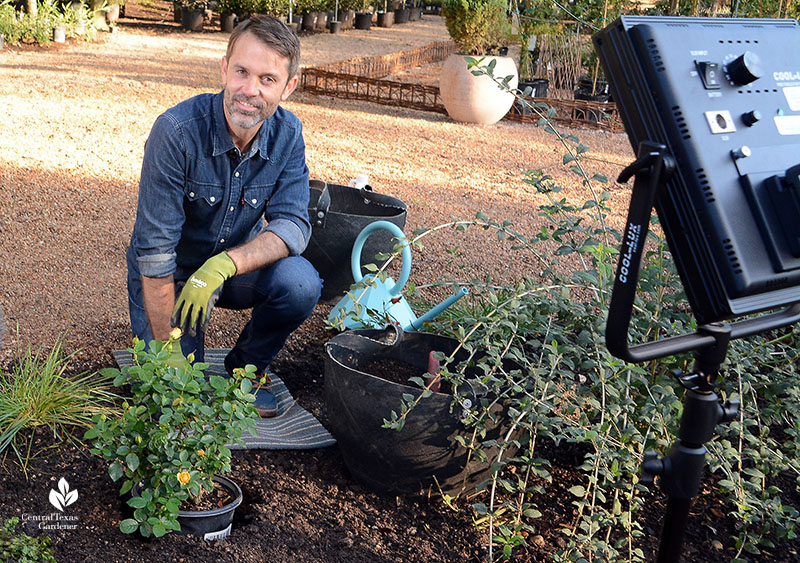
In this sunny spot, they’d already installed a pleasing array of native and well-adapted plants to illustrate diverse textures, foliar color, fragrance, and flowers for hummingbirds, butterflies, and bees.
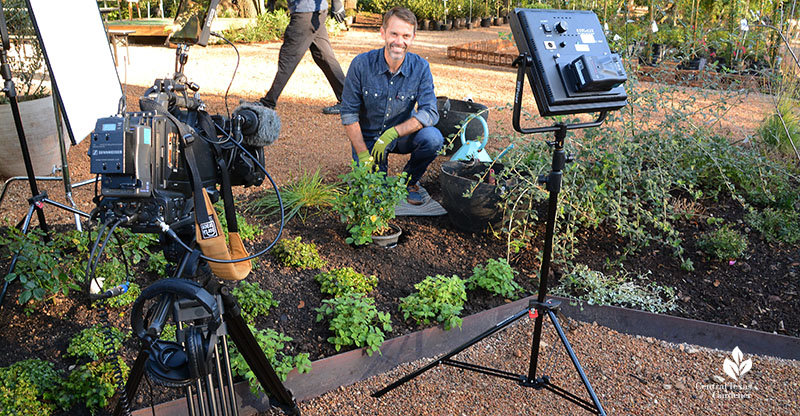
In Central Texas, winter’s the best time to plant roses. First, check out the mature size of your candidates. Julia Child’s a perfect rose for small, narrow spaces like this bed or even a large container. Although this disease-resistant, rounded floribunda rose is petite at 26-31” inches, it packs a lot of fragrance into glorious golden blooms.
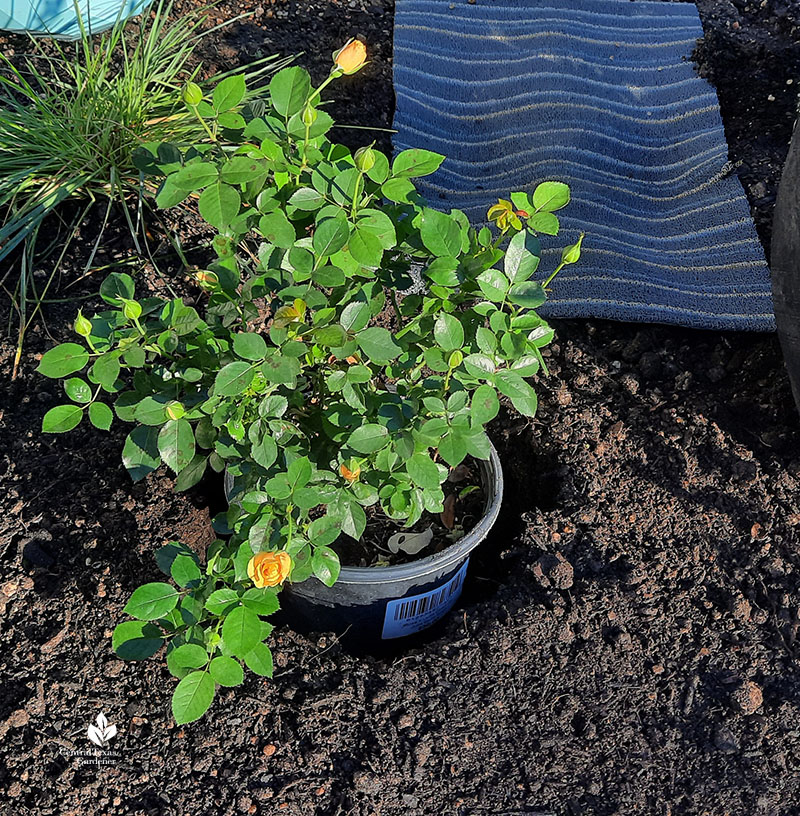
Next, you need at least six hours of sun, though eight is ideal. My fragrant Iceberg rose blooms summer and winter—even now in our nips. Its 3-4’ height works great in a narrow (neglected) side yard that gets hours of sun, including late afternoon’s summertime intensity.
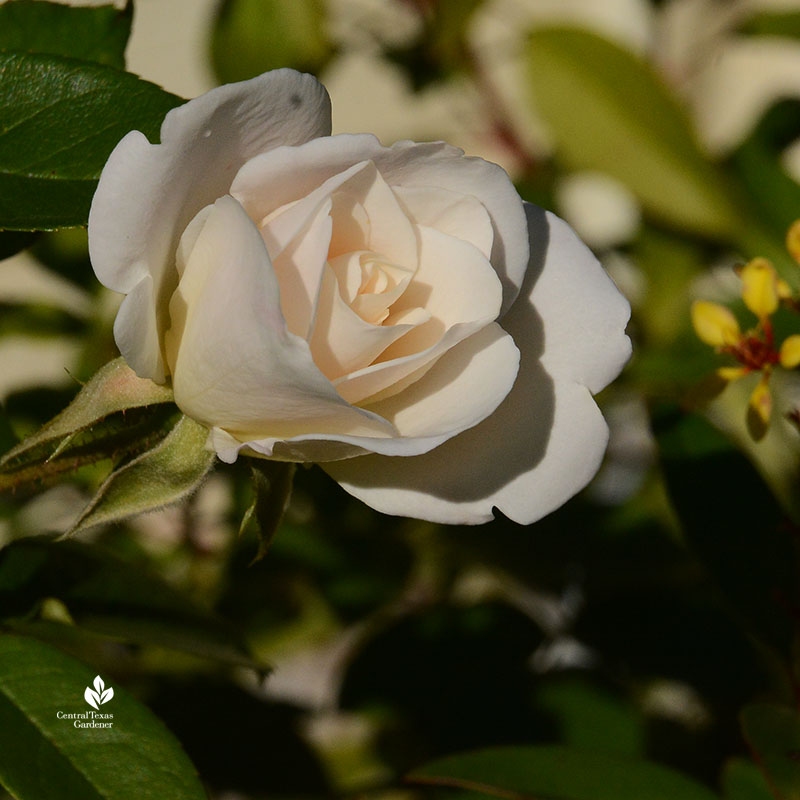
Since this is a brand-new bed, William first used a broadfork to loosen up the soil.
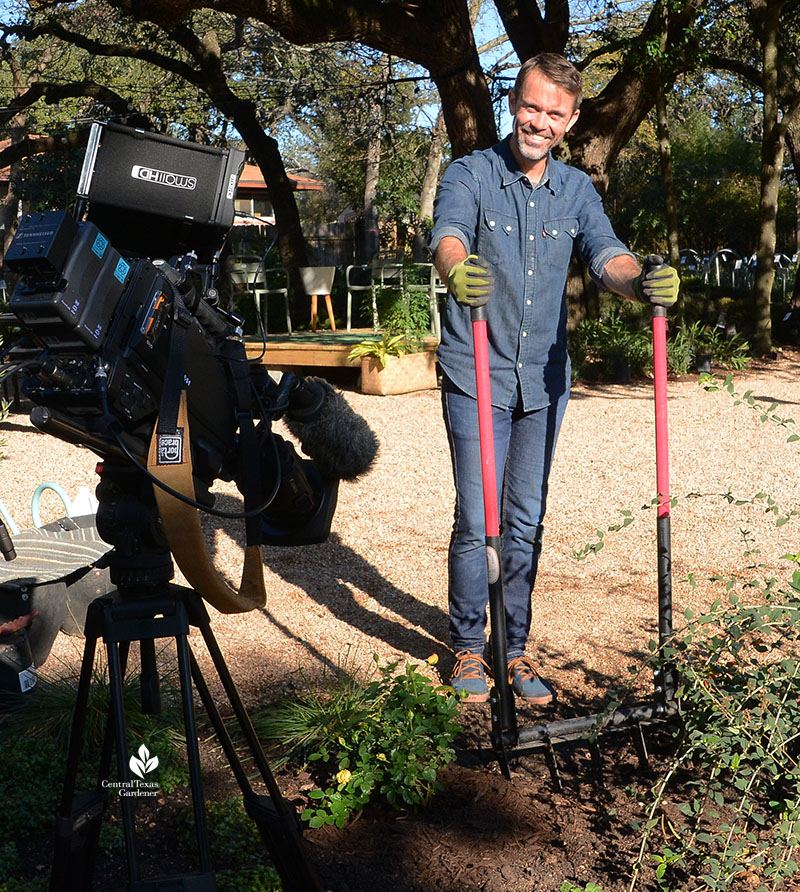
Of course, you can use a shovel or a garden fork. “Basically, the idea is to amend the adjacency—the area that surrounds the hole—so that you’re not only improving the hole itself where the rose is going to live, but encouraging it to migrate outwards. Short term, you’re going to get it established quicker and long term, you’re going to give it a more optimal environment in which to thrive,” Willy said.
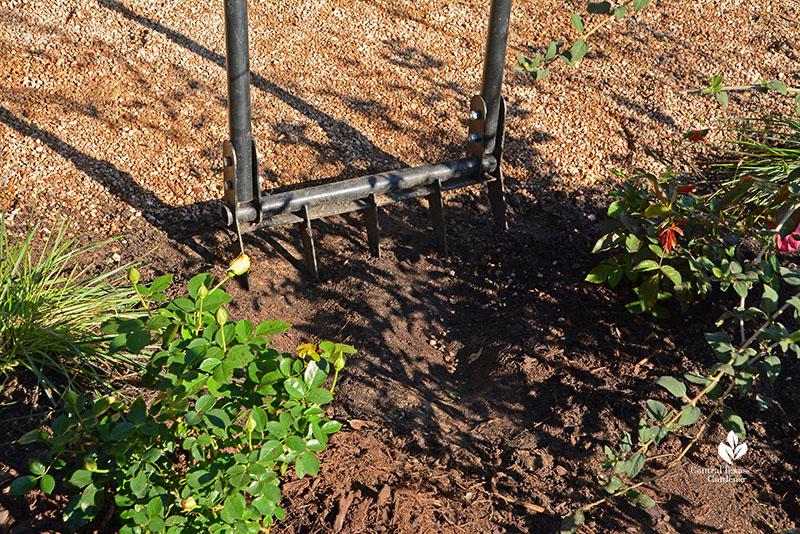
Then, improve the soil to acclimate roots to a new environment. Mix in compost for fertility. Willy likes partially acidified cotton burr compost because it contains a bit of sulfur to buffer our alkaline soil. Then, increase porosity with expanded shale, lava rock, or thoroughly mixed in decomposed granite. Also, if you’re planting in extended dry times (like now), it’s a good idea to moisten the planting area days in advance. You don’t want it soggy; just not dry as dust!
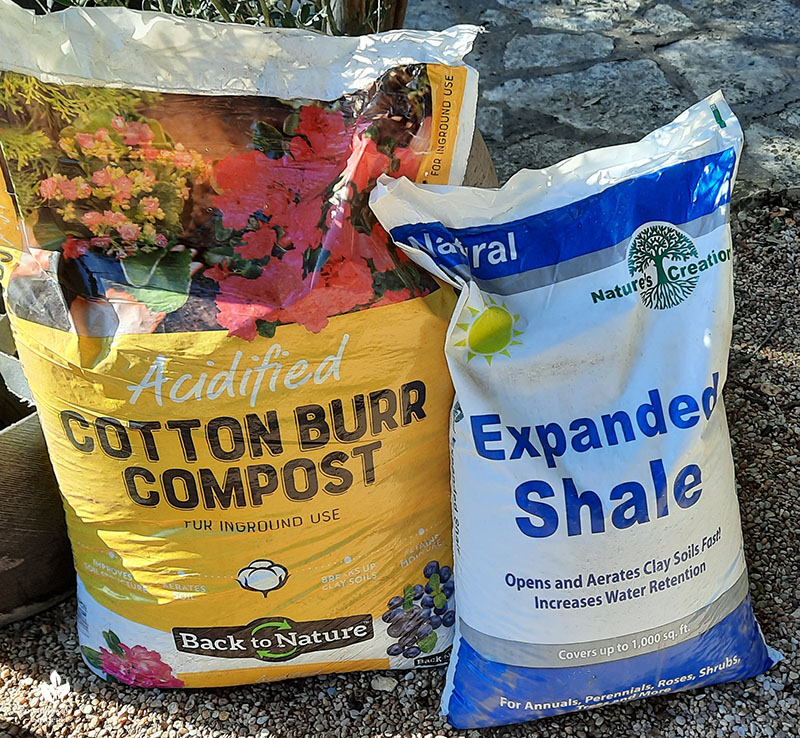
On planting day, dig an ugly hole that’s wider than the nursery pot but only as deep. Willy demonstrates how to create cavities, crevices, and fissures so that roots don’t just wind around in a comfy little hole, like in their pot, but adventure out to explore the big wide soil world.
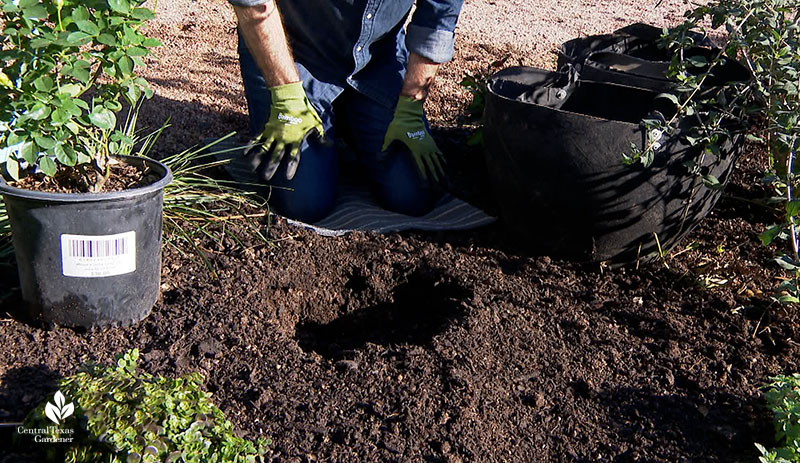
He shows how to check the root ball for circling roots. If you see a heavy web of roots—essentially confining the root ball—massage and coax them out to encourage outward growth.
Big note: don’t plant too deep! We want to keep the bud union at the top of the root ball level with the soil (Northerners plant deeper to protect in their extreme cold). I love Willy’s practical habit to put the excavated soil (native soil, compost, expanded shale) into a trug. Slowly he backfills—adding soil gradually back into the hole.
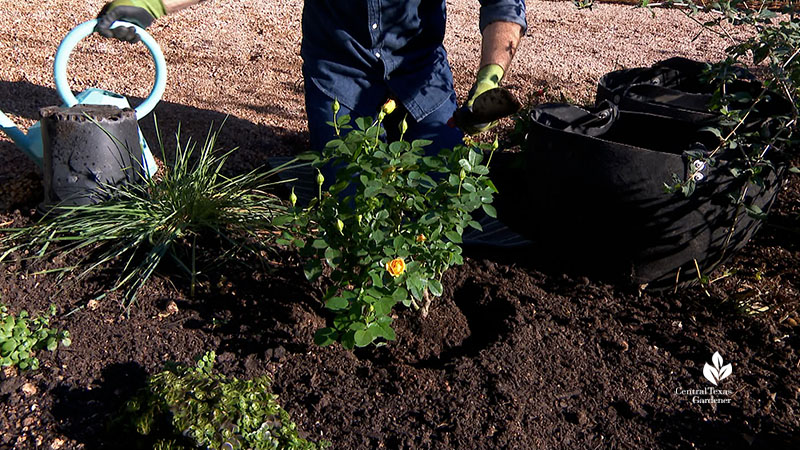
As he adds soil, he waters gently to help air pockets settle. Keep backfilling and watering until the root ball is at soil level. To retain porosity, you don’t want to shove the soil down and mash it in the hole. “We’re careful to make sure that we keep the airspace as open as we can and let the water do the firming for us,” Willy said. And since significant rainfall isn’t forecast, do give it a good soak once a week or so this winter, including the adjacent soil.
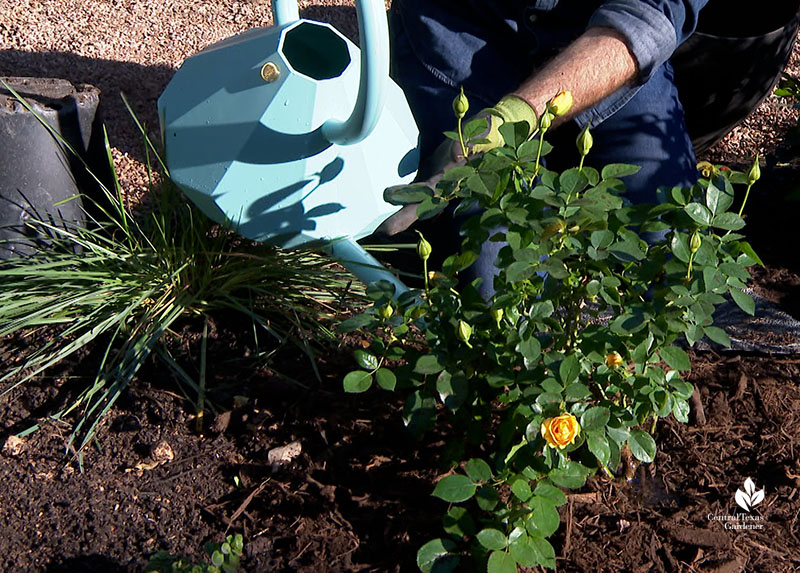
You don’t need to fertilize at this point. Willy adds a root stimulant to his watering can to get soil life up and running without pushing leaf growth. “If you add nitrogen, especially if it’s going to get cold soon, you can actually get into a situation where you have tender growth that’s affected,” he said. He likes a humic/fulvic acid complex, but molasses and seaweed are also good choices.
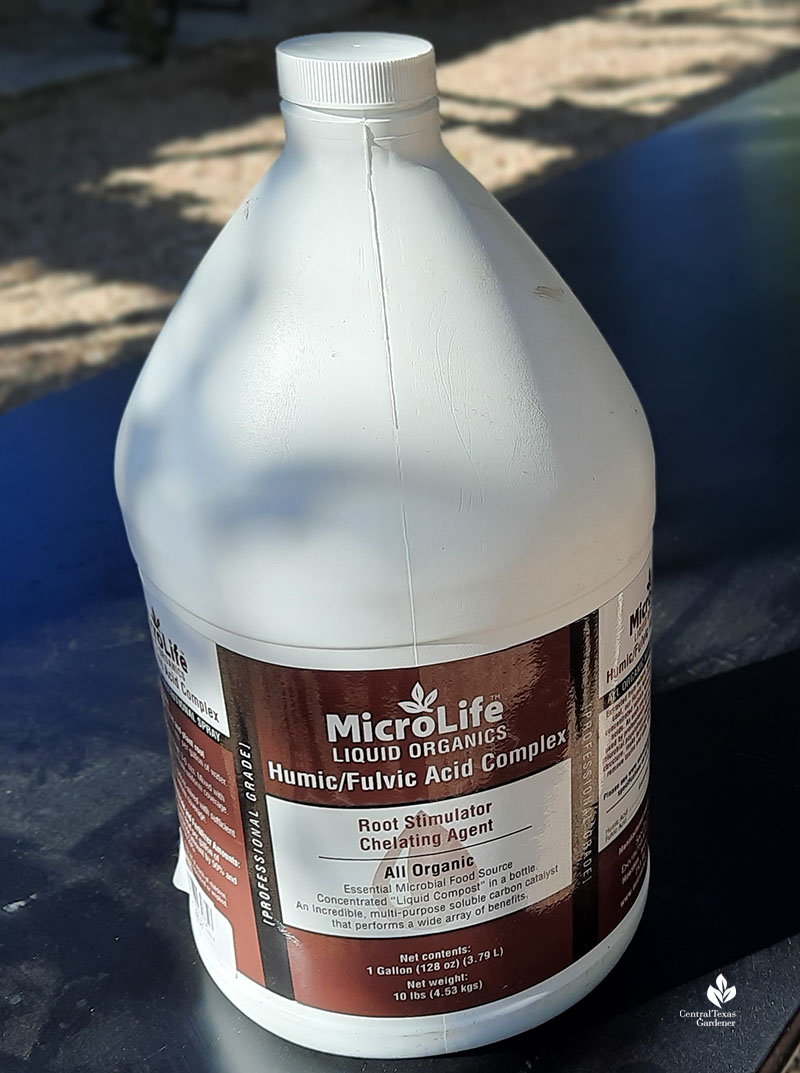
Now it’s time to mulch. As with any woody species, keep it away from the base of the plant.
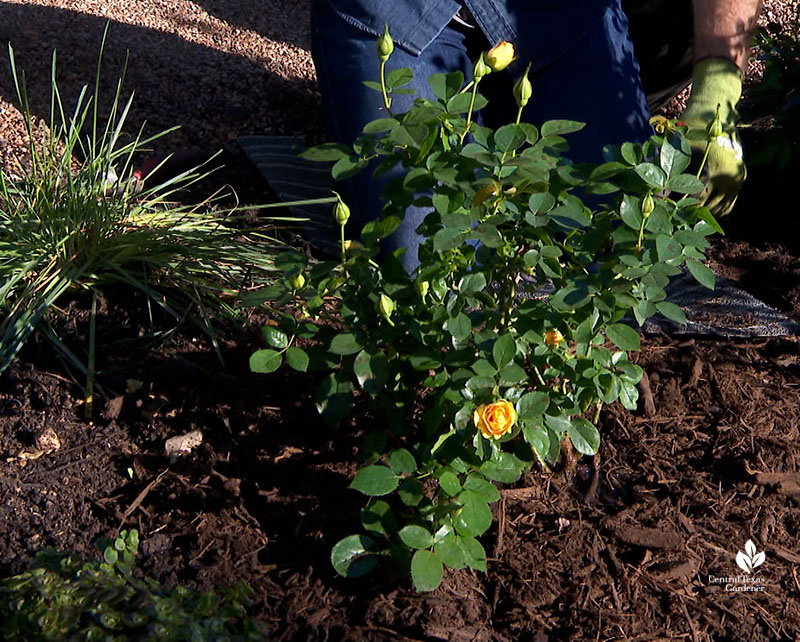
In this narrow strip, Julia Child companions with fellow roses Iceberg and Cinco de Mayo, along with Chinese sedum in the middle and Walker’s Low catmint edging the border. Native plants include Twoflower Melicgrass, cascading silver-toned Lippia alba, and silver ponyfoot groundcover (Gregg’s dalea out of view). This shot represents the light before the sun came across the horizon. We paused our record to wait for the dramatic change.
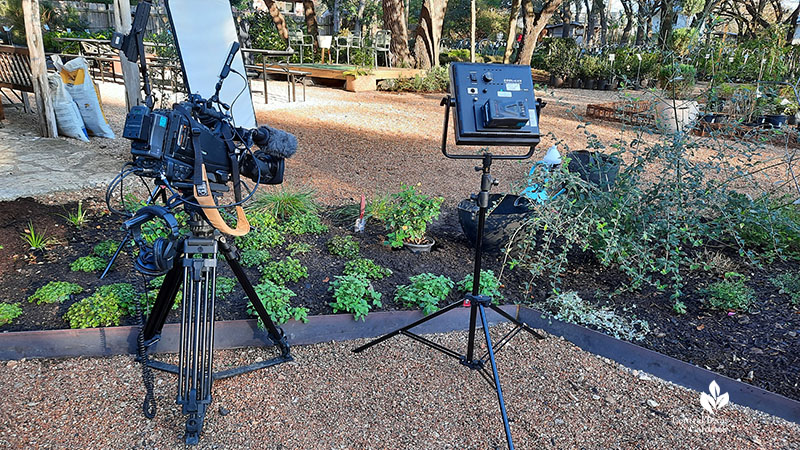
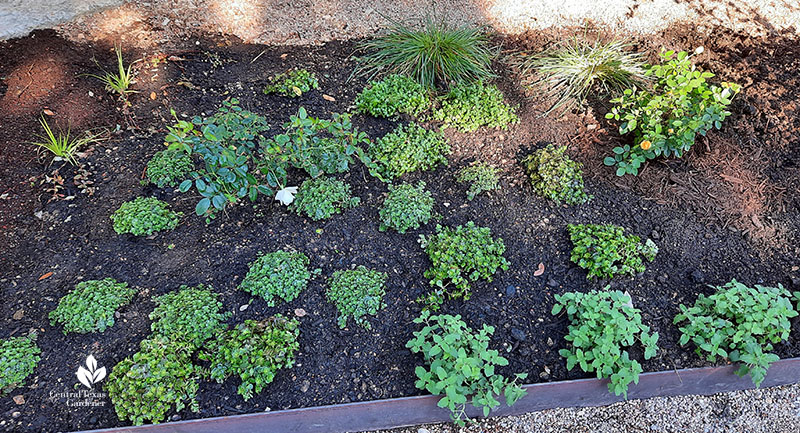
It only took about 15 minutes for the sun to swoop over with high contrast light—a situation many of us face at home.
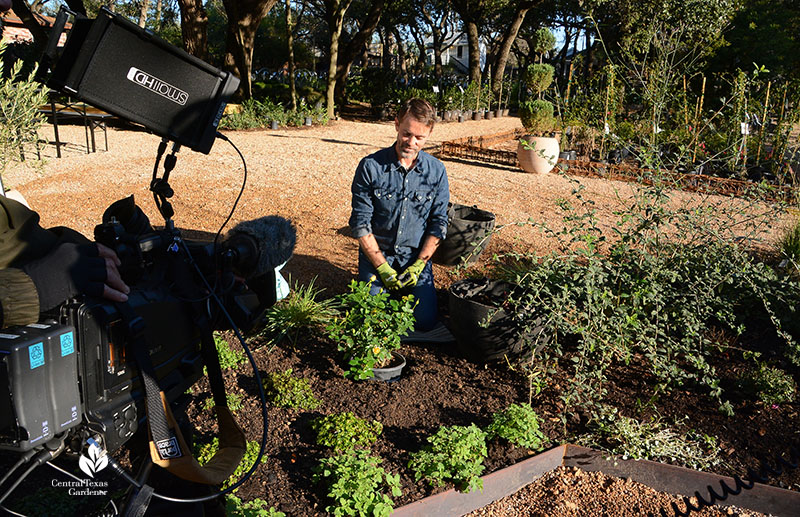
Here’s native Melicgrass (Melic mutica). I grow this at home myself.
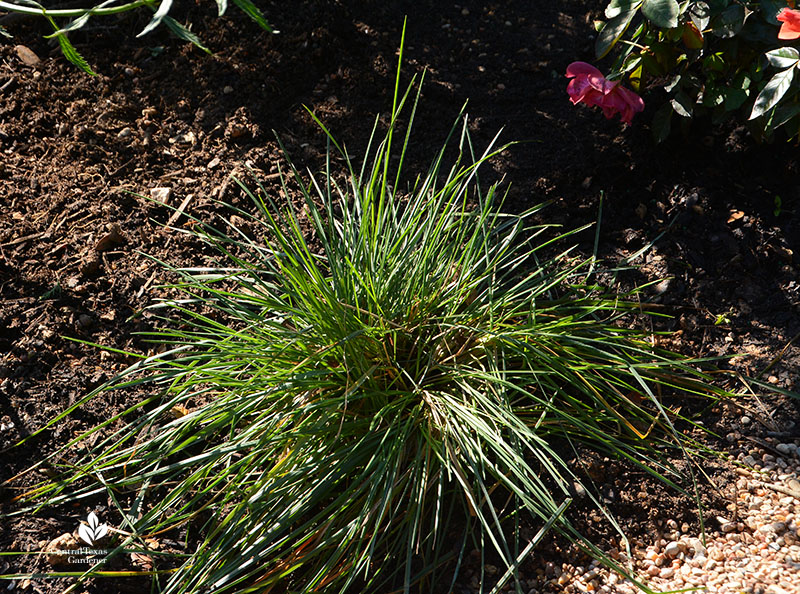
From the other side, you can see a second Lippia, Desert willow ‘Bubba’, ruby grass, Verbena bonariensis, lantana, aster, snowflake sage, and dwarf lion’s tail.
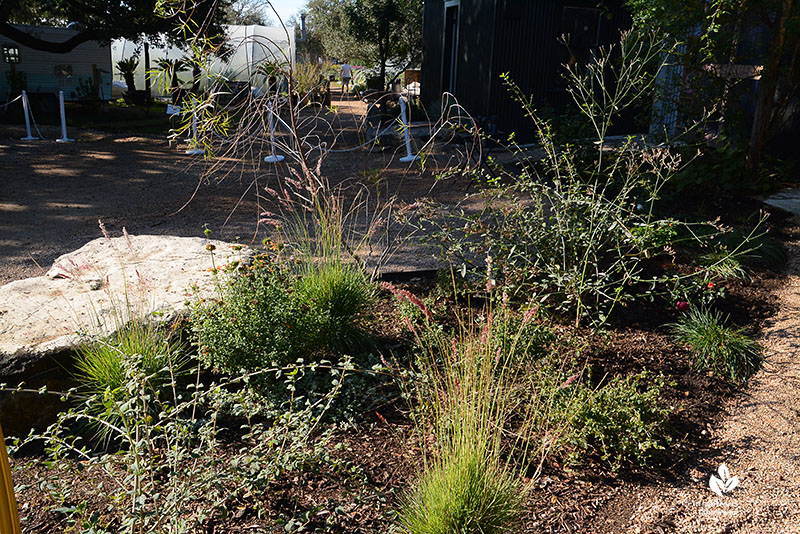
Low-growing snowflake sage (Salvia chionophylla) threads silvery foliage at ground level.
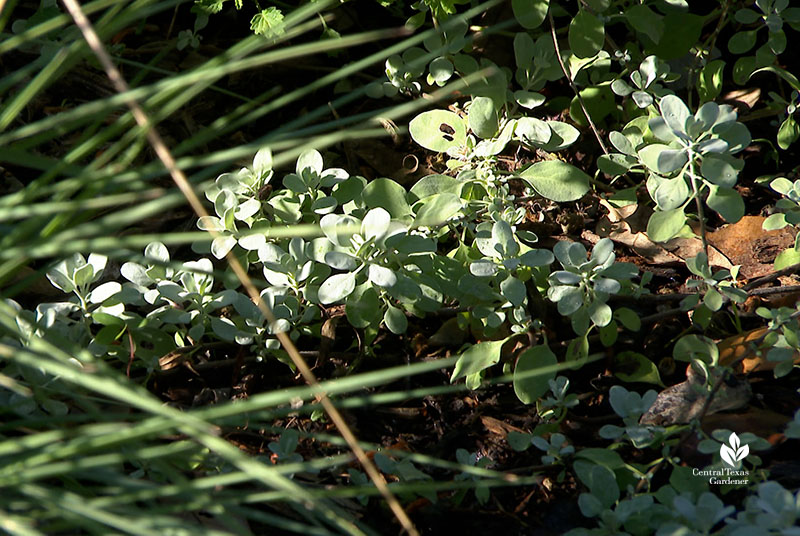
In this little pollinator haven, dwarf lion’s tail pops tubular flowers for hummingbirds, bees, and butterflies.
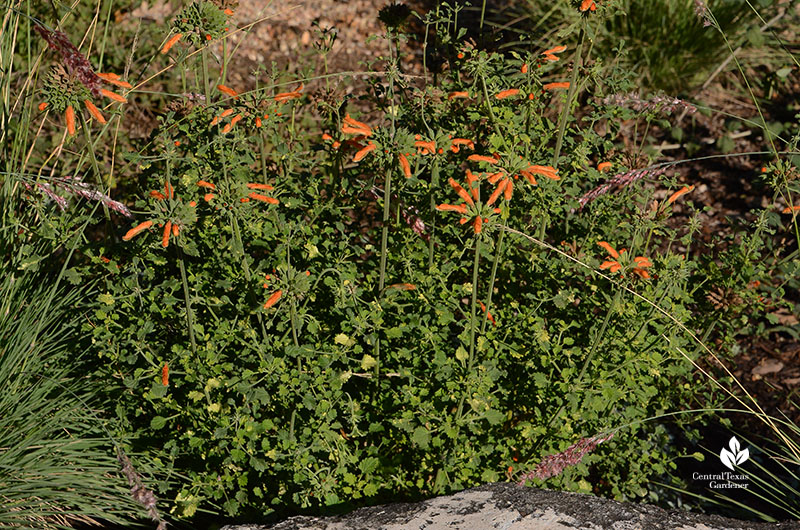
Willy also touches on insects, fungal disease, pruning, and moving an established rose. Watch it all now!
Thanks for stopping by and happy planting! Linda
tags:

